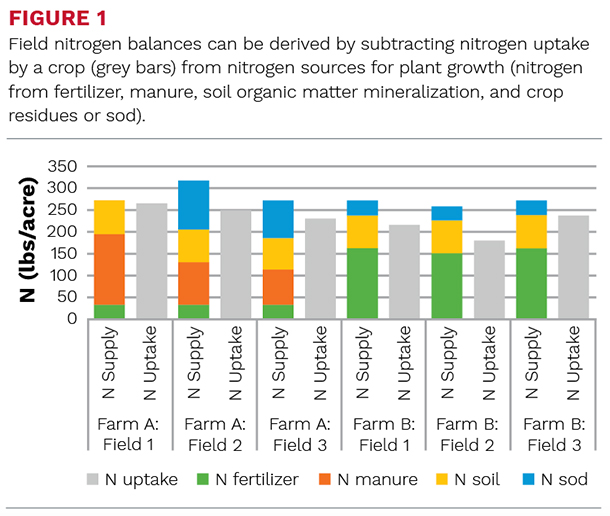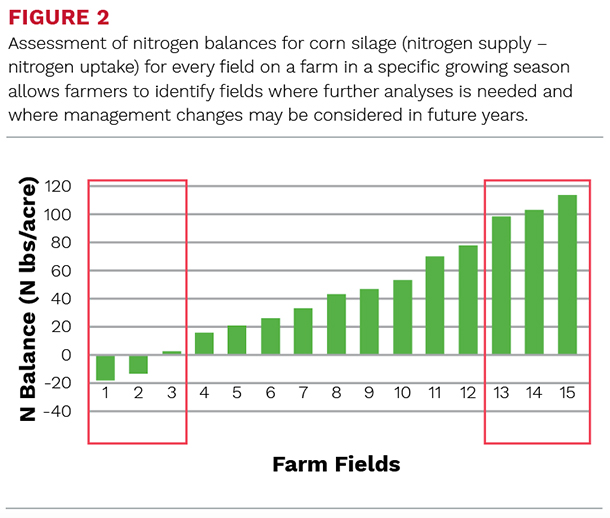This document was co-authored by 21 research and extension specialists representing 12 land-grant universities, USDA-Agricultural Research Service, and the International Plant Nutrition Institute. This publication (Strengths and Limitations of Nitrogen Rate Recommendations for Corn and Opportunities for Improvement) ends with the recognition that we must be mindful that ease of use and cost to farmers are two factors that have profound effects on the adoption rate of any improvement in nitrogen recommendation systems. As the authors stated: “We must keep it practical and inexpensive to ensure that it is realistic for farmers to use on a routine basis.”
SO, WHAT CAN WE DO?
For the success of any improved system, it is important to be able to evaluate if a shift in management was an improvement after all. While on-farm replicated trials are a great way to evaluate practices, including nitrogen management, not every farm can implement such trials. Tools such as the pre-sidedress nitrate test (PSNT) to monitor soil nitrate levels before fertilizing or cornstalk nitrate test (CSNT) used as a measurement of the nitrogen status of the corn plant, can help. However, taking soil or stalk samples adds to the peak workload of farmers and farm advisors, and there is a cost associated with sample collection and analysis. Is there any other way to check on nitrogen management that takes into account not only nitrogen added from fertilizer and manure but also nitrogen supplied by soil organic matter mineralization, nitrogen from cover crops, and crop residues (shoots and roots), and nitrogen supplied with manure, based on information already collected? This is where field nitrogen balances come in.
WHAT IS A FIELD NITROGEN BALANCE?
In its most straightforward description, a field nitrogen balance is the difference between the nitrogen accumulated in the crop over a growing season (nitrogen uptake) and the amount of nitrogen made available to the crop (nitrogen supply) within the boundary of a farm field. Thus, the nitrogen balance is the amount of nitrogen applied and released to the soil solution not taken up by the plant. The bigger this number, the greater the amount of nitrogen that is available for loss to the environment. Soil organic matter mineralization will take place in every growing season. Crop residues, past and current manure applications, and fertilizer additions will supply nitrogen as well.
All these sources need to be taken into account when calculating a nitrogen balance. While estimates of nitrogen from soil, crop residues, and previous years’ manure application can be somewhat uncertain, nitrogen balances calculated without these components are incomplete and could trigger the incorrect assumption that more fertilizer is needed. Field testing can help farmers become more comfortable with crediting these various sources of nitrogen.
If we take into account the major nitrogen supplies as shown in Figure 1 and the total nitrogen supply greatly exceeds nitrogen uptake, the difference (i.e. nitrogen not used by the crop) is susceptible to loss to the environment.

Thus, a nitrogen balance can help us identify where the risk of nitrogen loss is largest, allowing for troubleshooting and evaluation of other approaches in future years. This assessment is most useful when a farm derives nitrogen balances for every field and then ranks the fields based on the balance (Figure 2), enabling selection of fields with the most excessive balance for alternative management.

Ideal balances are greater than zero but not extreme in normal circumstances. If fertilizer or manure applications contribute to a large N balance, this indicates opportunities to adjust rates without impacting yield.
Our suggestion: measure yield and start tracking nitrogen supply. Once yields are determined, derive field N balances, rank them from low to high as done in Figure 2, and consider why balances are the way they are. Focus specifically on fields with negative balances and fields with balances that are, for example, 100 lbs. of nitrogen per acre or higher. Fields will differ in their ability to cycle nitrogen and therefore it is important to evaluate each individually. Nitrogen efficiency in poorly drained fields is often lower than for better-drained fields, so drainage issues can play a role in nitrogen balances too.
For fields with the highest balances, was the yield low this year due to drought or a pest control problem? If so, address pest control issues or evaluate the field under more optimal growing conditions before making major changes. Is the field well-drained and high-yielding but balances are still high? Then the nitrogen applied may have been more than the crop needed.
Karl Czymmek is with PRO-DAIRY and the Cornell Nutrient Management Spear Program. Jonathan Berlingeri and Quirine Ketterings are with the Cornell Nutrient Management Spear Program.
This article appeared in PRO-DAIRY’s The Manager in March 2021. To learn more about Cornell CALS PRO-DAIRY program, visit PRO-DAIRY Cornell CALS.


